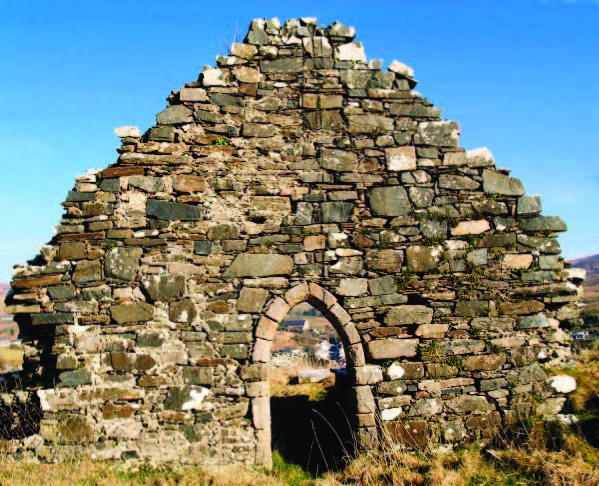By Jim Lynch, Recording Secretary
A large number of Kevin Barry Division members can trace their Irish roots to the small village of Kilcar, Co. Donegal. Because of this connection, it is always interesting to discover new information about that area. The village church, St. Cartha’s (top) is a good example.

In 1903 the parish priest of Kilcar, Rev. Andrew McNeilis began the process of collecting funds for the construction of a new larger basilica style church. The then-current church built in 1830, directly after the passing of Catholic Emancipation, was outdated and too small for the Catholics of the parish. (The old church is now the parish hall.)
Donations came from parishioners, many dioceses in Ireland, and from various locations in the USA: including Colorado, Brooklyn, Buffalo, Bronx, Ohio, Indianapolis, Chicago, Kansas City, Philadelphia, Texas, and Boston. Collections also came from Scotland.
Fr. McNeilis also started acquiring contracts and having land surveyed. Local members of the community, including Catholics and Protestants, took an active part in the construction of the church. They carted sand, sharpened tools, cut stone, hand carted stone, cut oats for horses, burned lime, carried turf, and dressed stone. Farmers and fishermen alike were involved in constructing the spectacular building.
The church site required a lot of quarrying before actual building could begin; blasting materials came from Killybegs. Parishioners McMullen Bros. quarried most of the building stone from Bavin, a short distance from Kilcar. Eighteen months after work began, the dedication and opening of the new church took place on Sunday, Sept 4, 1904. Total cost of the building was in the vicinity of £5,000 ($6,300).
The history of St. Cartha’s church in Kilcar is much older than 1830. Named after a local saint, the earliest foundations are found on the hill, opposite the current church, at the other end of the village. Those foundations date from 540 AD. Since these churches were built of timber, nothing remains.

Ruins of the first stone church do remain. This church was used by the Catholic community solely until 1610. After the plantation of Ulster, the Penal Laws were enforced, and it was forbidden for Catholics to hold public worship. The Protestant community took over the church and used it until 1828, when they built their own church.
Ruins of the first stone church do remain. This church was used by the Catholic community solely until 1610. After the plantation of Ulster, the Penal Laws were enforced, and it was forbidden for Catholics to hold public worship. The Protestant community took over the church and used it until 1828, when they built their own church.
In 1834 the Protestant community numbered 202 and the Catholic community numbered 4298. The old graveyard next to the stone ruins, as was customary, was used by both the Catholic and Protestant communities.
In Penal times and Cromwellian times, Mass was said in quiet glens,on mountain tops, along rivers and near the coast. Mass rotated from one place to another and it was never announced where the next placewould be, because of the fear of an informant being present. The people never looked at the priest, in that way they would never know who it was who said Mass.
St. Cartha’s church has a history in Kilcar of almost 1,500 years, an amazing fact in itself!

At left is the new St. Cartha’s Church at the other end of town looking out on to Donegal Bay and the Atlantic Ocean. Next stop is the USA.